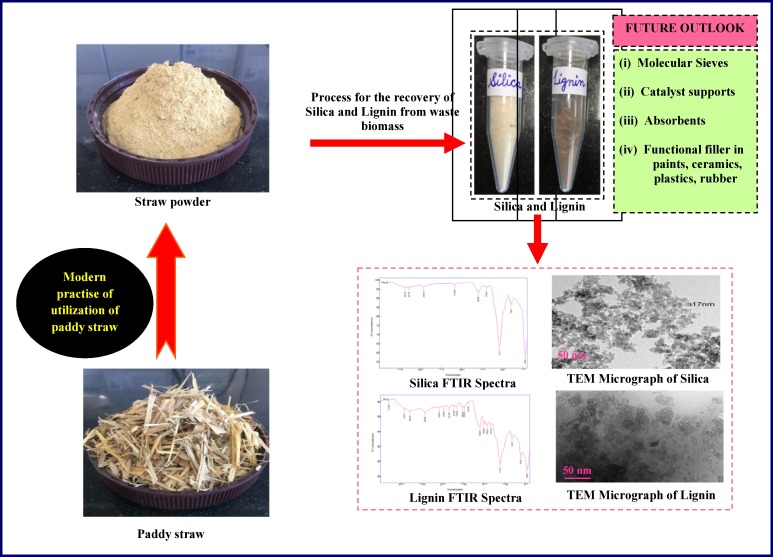Journal of Cleaner Production ( IF 11.1 ) Pub Date : 2018-05-17 , DOI: 10.1016/j.jclepro.2018.05.136 Baljinder Singh Kauldhar , Sudesh Kumar Yadav

|
Mechanization of agriculture in the developed and developing countries generates lot of secondary agricultural waste. Efforts are being carried out to use such waste in production of energy, fuel and platform chemicals. Such technologies/processes would have two fold benefits. First, they are based on utilization of waste and thereby providing protection to the environment. Second, they produce value added products from waste and thereby providing additional income source. In this regard, rice is one the highly cultivated crops across the world and therefore generates huge waste in terms of straw. Hence, rice/paddy straw was used as a raw material in a direct process of simultaneous clean separation of small sized nano-silica and lignin. Since paddy straw is available in abundance, low in cost and causes environmental pollution upon burning, its use in the recovery of precious molecules of industrial applications would add value to the economic gain. In the present study, a simple acid-base hydrolytic method was used to recover pure silica (SiO2) nanoparticles and lignin from paddy straw residues, with negligible mineral contaminants. The physio-chemical characteristics of lignin and nano-silica were determined using fourier-transform infrared spectroscopy (FTIR), thermogravimetric analysis (TGA), X-ray diffraction (XRD), transmission electron microscopy (TEM) and scanning electron microscopy (SEM) studies along with energy-dispersive X-ray spectroscopy (EDS) analysis. Highly pure nano-silica and lignin were derived by acid precipitation process at an overall yield of 9.26% and 2.30%, respectively. The elemental composition of SiO2 and lignin was authenticated by FTIR pattern and EDS analysis. Both SiO2 and lignin were found to be amorphous in nature as confirmed by XRD investigation. Through this direct method, uniform sized spherical nano-silica particles of around 17 nm have been separated from paddy straw. This process perfectly worked at kilogram scale of paddy waste with similar equivalent level of yield. Hence, the recovery of such commercially important molecules would not only provide the possible protection to environmental pollution due to the abundance of paddy straw and its burning but can also contribute to the sustainable economic growth of the country by providing additional income to the farmers.



























 京公网安备 11010802027423号
京公网安备 11010802027423号